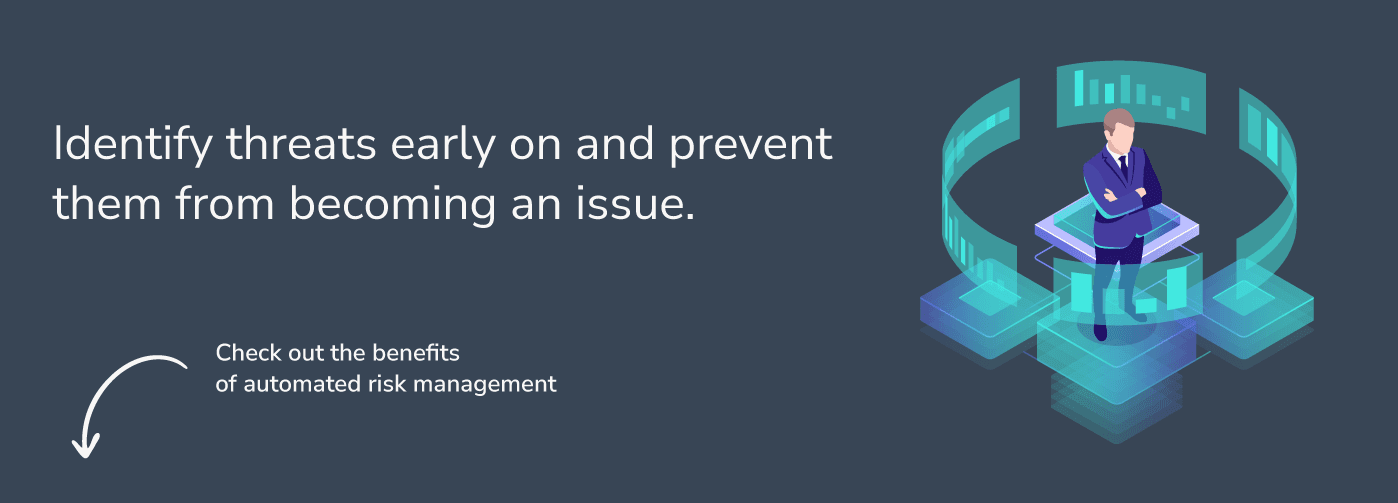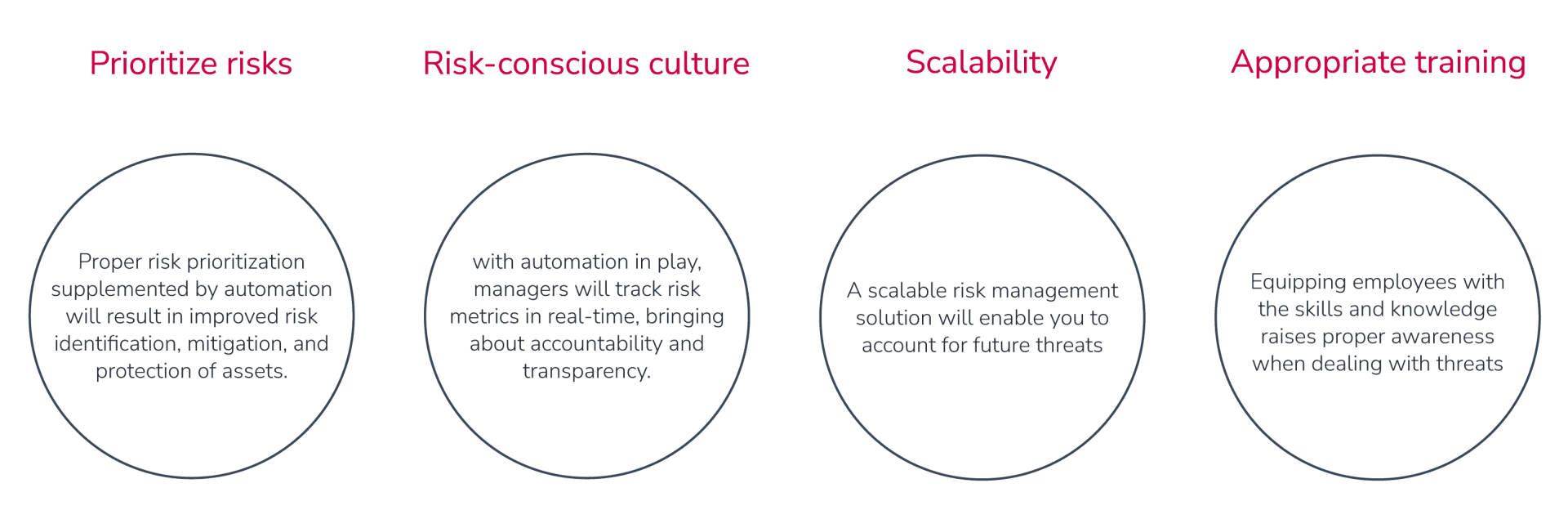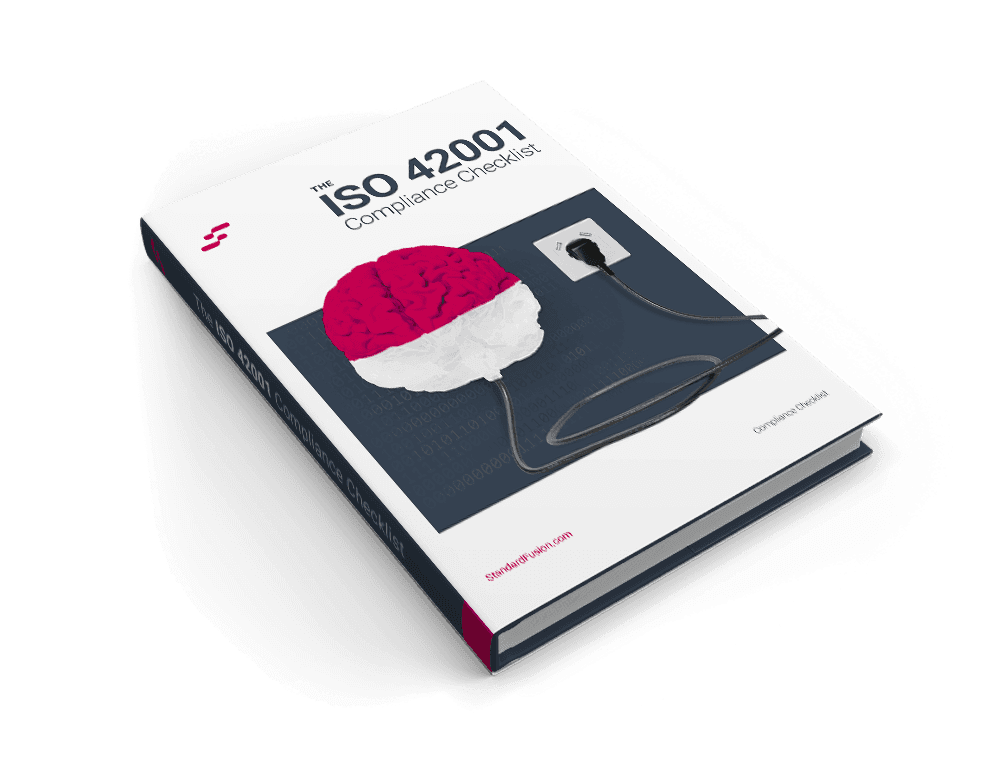Sep 12, 2022
A Beginners Guide to Automating Risk Management Processes
Do you find risk management time-consuming and stressful?
If so, don't worry; you are not alone.
In the past, adapting existing tools like spreadsheets for risk management may have been enough, but today, they can be a severe liability.
As risks and threats evolve, companies must become faster and more efficient.
This simple guide will reveal how automating risk management processes will help you and your team focus on managing threats instead of spending time on tedious, unnecessary tasks.
Let's get started!!
Why is Manually Managing Risk an Issue?
Manually managing risk is often inefficient at best and can be significantly damaging in case of a breach or incident. For example, teams can spend a disproportionate amount of time collecting data and summarizing their findings in reports " instead of managing risk.
Not only do the reports require time and effort, but by the time a report is complete, it is likely already outdated. In addition, teams operating across varying silos within an organization are prone to having non-standardized assessments, leading to scattered data and inferior risk identification and mitigation.
Manually managing risk also makes compliance complex as teams cannot quickly visualize which framework requirements, mitigating controls and company policies align to protect their interests.
How can this affect you?
Well, teams will take longer to determine where they are or are not compliant and have to rely on outdated reports and incomplete assessments to develop controls and make decisions.
The Objective of Automating Risk Management Processes
Automating risk management processes supports the company's risk or compliance team instead of automating risk management itself. For this reason, automated risk management processes allow teams to focus on identifying, assessing, and managing their risks.
In contrast, the background processes keep your data organized and accessible.
Automating the entire risk management process would require artificial intelligence that can understand the business environments and objectives. Moreover, it should detect any risks by observing all the processes within and outside the company.
While these computing systems exist, we are years, if not decades, away from mass adoption. Even more, if you consider the additional costs and risks associated with emerging technology.
Why Automate Risk Management Processes?
Organizations that have correctly automated part of their risk management processes can identify risks early on and prevent them from becoming an issue.
By doing so, organizations can protect their assets and interests while minimizing the impact an incident could have on day-to-day operations and the long term.
In addition, companies that have implemented automated risk management processes will have extra advantages.

Benefits of Implementing Automated Risk Management
Improved analysis and operations: Automation provides executives and teams with an up-to-date view of risks, controls, and assessment results. Organizations can then evaluate the likelihood and severity of risks and make informed decisions based on real-time data. Finally, an automated system will allow managers to maintain their risk register with little manual intervention.
Elimination of manual tasks: Organizations deal with massive amounts of data. Manually managing all the data associated with your company is an immense task and is not necessary with today's technology. Teams can eliminate manual data entry, gathering, organizing, and searching for data with systems that automatically upload and sort information.
An automated system will also allow you to schedule tasks as recurring tasks, which will be repeated accurately and effectively. As human error is all but eliminated, risk teams can direct their attention to more valuable activities.
ROI: Many organizations may be hesitant to make the upfront investment that comes with an automated system. However, automation will quickly cover the initial cost in the long run. With an advanced security posture, risk teams are better prepared for potential threats.
Real-time insight and reporting: Through automation, risk teams and managers get live access to risk assessments, controls, policies, and continuous monitoring of risks. Users can track trends and identify factors that affect risk levels and areas that need improvement. Risk managers can quickly generate reports based on their current data and share findings across the organization. Eventually, the entire organization will make more informed decisions.
Improved internal communication: Risk managers face an uphill battle in communicating and tracking tasks across teams. Especially if they want to stay organized between emails, notes and reminders. When working in a single, automated tool, risk managers can follow all the work performed, delegate tasks and easily communicate with internal teams.
Improving Risk Management Through Automation
Even though automating risk management processes is highly beneficial, an incorrectly configured system could spell disaster. Moreover, it could bring operational and legal repercussions. Nonetheless, organizations can adopt best practices and solutions for risk management processes, including:
Prioritize risks: As with any automation, flawed input will produce flawed output. For organizations to benefit from risk automation processes, they first need to identify, assess, and prioritize risks accordingly. Proper risk prioritization supplemented by automation will result in improved risk identification, mitigation, and protection of assets.
Transparent, risk-conscious culture: A risk-conscious organization already has established acceptable ways of managing risk. Hence, this culture makes it easy for an organization to automate risk management processes. Additionally, with automation in play, risk managers will track risk metrics in real-time, bringing about accountability and transparency.
Scalability: Companies must be able to adapt to evolving risk and internal growth. A scalable risk management solution will enable you to account for future threats. Also, an automated risk management solution should scale and be able to mitigate future risks.
Appropriate training: Equipping employees with the skills, and expert knowledge regarding the company's risk and posture, raises proper awareness when dealing with threats. Furthermore, training makes adopting an automated risk management system more effective as teams will know how to use the tool to its full potential.

Automating Your Processes
Automating risk management enables teams to focus solely on managing risk. However, the platform also takes care of everything behind the scenes.
Automated platforms keep users organized throughout the entire risk management lifecycle, leading to faster and more in-depth assessments for improved risk mitigation " at a lower cost.
Finally, automation also standardizes team communication and puts real-time information in front of decision makers with dashboards and reports.
If you want a comprehensive tool to scale your risk management and compliance programs, reach out to our team today and schedule a demo.







